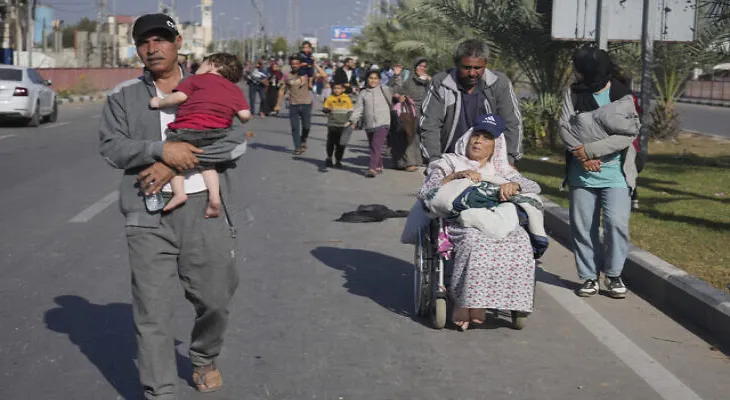Search here
Newspaper
Search here

Arab Canada News
News

Published: November 8, 2023
UN monitors said Wednesday that the pace of Palestinian civilians fleeing the combat zone in northern Gaza has accelerated as the Israeli air and ground campaign there intensifies.
The United Nations Office for the Coordination of Humanitarian Affairs said about 15,000 people fled on Tuesday compared to 5,000 on Monday and 2,000 on Sunday.
Civilians can move during a four-hour period designated daily by the Israel Defense Forces to ensure safe passage from Gaza City and its suburbs to the south. The UN agency said most of the evacuees are children, elderly, and people with disabilities. Many have arrived on foot carrying minimal belongings.
According to the Times of Israel, the war broke out when about 3,000 fighters led by Hamas breached the Gaza border on October 7, killing about 1,400 people – mostly civilians – in towns in southern Israel. At least 240 hostages were also taken in the territory.
After suffering its worst single-day human loss in its history, Israel pledged to end Hamas's control of the area and eliminate the terrorist threat that has continuously emanated from the territory for most of the past two decades.
The Coordinator of Government Activities in the Territories posted a short video on X on Tuesday, saying it shows the movement of civilians southwards, with many seen carrying white flags and raising their hands in the air, passing an Israeli vehicle.
The Israeli army spokesperson in Arabic, Avichay Adraee, also posted a short clip, informing residents on Wednesday that Salah al-Din Road would be open again for Palestinians to evacuate to southern Gaza between 1 pm and 4 pm.
For weeks, Israeli authorities have been urging civilians in Gaza to move to the southern part of the territory, where most of its ground and air operations against the north have been concentrated, although Israel routinely bombs what it says are terrorist targets in the south. Israel has dropped leaflets in the northern sector urging residents to leave and providing evacuation route maps.
Israel is focusing its operations on Gaza City, which was home to about 650,000 people before the war and where the army says Hamas has its central leadership and where there is a vast maze of tunnels.
More than 70% of Gaza's 2.3 million residents have already fled their homes, but the increasing numbers heading south indicate an increasingly desperate situation in Gaza's largest city and its surroundings, which have been subjected to intense Israeli bombing.
Tens of thousands of Palestinian civilians remain in the combat zone, many seeking shelter in hospitals or UN schools. Some said they were prevented from moving south due to the difficult humanitarian conditions in the evacuation area and ongoing Israeli airstrikes.
Hamas has accused the Israeli army of shooting or striking convoys of evacuated people, allegations Israel strongly denies. Instead, the Israeli army has presented evidence that Hamas militants are trying to prevent civilians from moving south, establishing roadblocks, and even claiming they are firing on convoys.
On Saturday, when Salah al-Din Road was opened for a humanitarian corridor, the Israeli army said Hamas exploited the situation and fired mortars and anti-tank guided missiles at forces working to open the road for civilians.
In an interview on Monday evening on ABC, Prime Minister Benjamin Netanyahu said Hamas “uses its civilians as human shields, and while we ask Palestinian civilian residents to leave the war zone, they prevent them under threat of weapons.”
The Hamas-run Ministry of Health confirmed that more than 10,300 Gaza residents have been killed since the start of the war, while Israel says it is trying to minimize civilian casualties and accuses Hamas of using non-combatants as human shields by embedding fighters and military infrastructure in homes, schools, mosques, and hospitals.
Comments